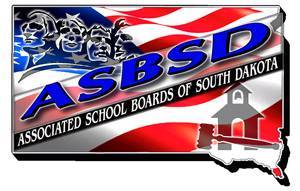Blue Ribbon Task Force members recently submitted a report to Gov. Dennis Daugaard that detailed the group’s findings on South Dakota’s teacher pipeline, their recommendations for adjusting the state aid formula, suggested changes to different school funding areas and a timeline for implementation.
Task Force members told Gov. Daugaard that “at least $75 million in new ongoing funding” (read about the recommendation here) would be needed to quell the current teacher shortage in the state, which, without change, could continue as the report states “the incoming pipeline of teachers will not meet the projected needs of districts when looking ahead five years.”
The Task Force report notes in the next five years the teacher pool is estimated to exceed openings by approximately 400 candidates, but acknowledges the pipeline “minimally provides the number of new teachers needed” and “will leave only one applicant” per opening without quality taken into account.
Low salaries are recognized throughout the report as a main reason for the shrinking teacher pool and, in conjunction with the recommended new revenue, the Task Force suggested a new funding formula reflecting “real input costs of the educational system.”
The new formula would multiply the district’s student-teacher ratio (likely based on enrollment) by $48,000 (the average teacher pay goal) and increase that total by 30 percent to encapsulate benefits. The total from the new student-teacher ratio equation would then be increased by 29 percent to cover non-instructional costs in the school district.
The updated formula will also include a growth factor of three percent or inflation, whichever is less, according to the report. The same growth factor is currently used in the state funding formula, as well.
Changes to school funds described in the report include the reinstatement of reserve fund caps and the equalization of new growth in other revenue sources.
Task Force members are recommending a three-tiered system, based on school district enrollments, of fund balance caps, which will be calculated when a school district’s reserves are at its lowest reported month-end cash balance during a twelve-month period.
S.D. DOE will review fund balance data and recommend cap levels for the three enrollment tiers.
The establishment of an oversight board to review proposals from districts that need to exceed the cap in a fiscal year was also recommended. Districts exceeding the cap without approval will have its state aid reduced on a dollar-by-dollar basis.
The future growth of six other revenue sources – gross receipts on tax utilities, local and county revenues in lieu of taxes, traffic fine dollars and wind farm and bank franchise taxes – was recommended for equalization in the Task Force report.
“Each school will be given a base determined by the most recent year’s cumulative revenue,” the report stated. “In subsequent years, any revenue collected that exceeds the base will be counted as local effort and added into the per teacher formula to be shared among all school districts.”
Task Force members suggested each change to be phased in over a three year period – the final stage being the 2018-19 school year.
“This gives school districts time to adapt to the reforms and implement changes with proper foresight,” the report stated.
Blue Ribbon Task Force’s report is the final step in their process, but is the first step in the lengthy process of adding new money to K-12 education. More information may become available following Gov. Daugaard’s budget address on Dec. 8.
ASBSD will provide updates on the governor’s budget address on the ASBSD Blog and Twitter feed.

